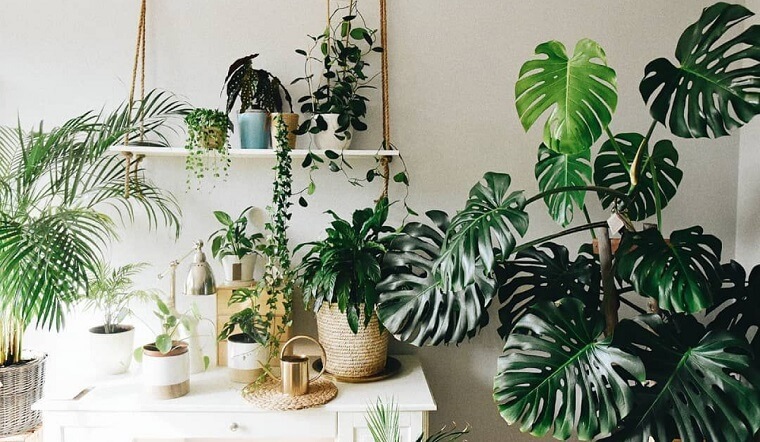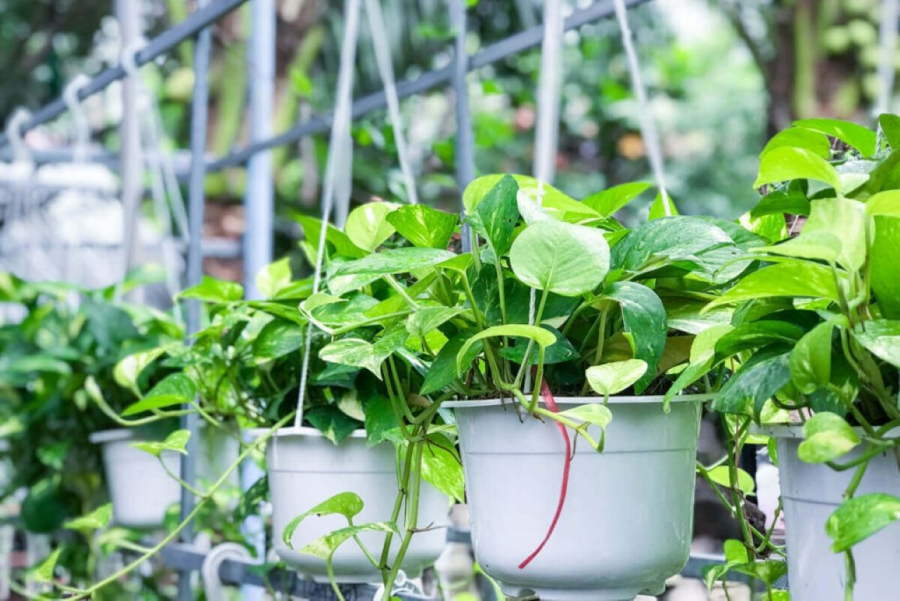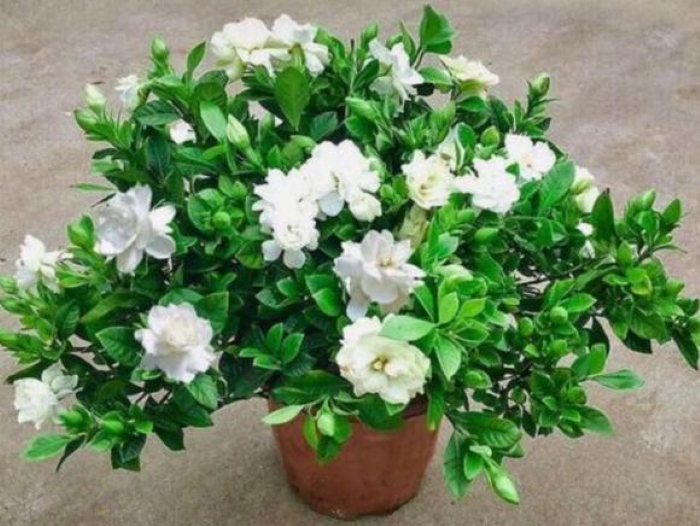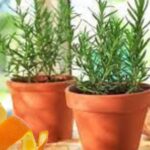Rainwater is slightly acidic but also contains a small amount of nitrogen, so taking your gold-branch jade-leaf plant outdoors in the rain is like giving it fertilizer. The longer you leave it out, the plumper and greener its leaves will become, and the more vibrant the plant will be.
1. Split-Leaf Philodendron
The split-leaf philodendron rarely flowers, but its leaves are stunning, with large, shiny leaves that make it a beautiful houseplant. They are typically placed in spacious areas like balconies or living rooms, adding a touch of freshness to the space.

During the summer rainy season, it is recommended to move this plant outdoors so it can soak up the rain. The leaves will become rounder and larger, and the stem will grow taller, as if you had fertilized it.
This plant is also known for its air-purifying abilities, removing dust, toxins, and even radiation from electronic devices. It is favored for its feng shui meaning, symbolizing peace, luck, and harmony.
The split-leaf philodendron is easy to care for. It loves water, so during the rainy summer months, move it outdoors to let it drink in the rain. Its leaves will become rounder and larger, and the stem will grow taller.
However, if you place it outdoors, be mindful of strong sunlight as the leaves cannot withstand intense heat. To protect it from the sun, use a sunshade or place it under a large tree.
2. Gold-Branch Jade-Leaf
If you have a gold-branch jade-leaf plant, it is best not to keep it indoors.
Firstly, this plant thrives in bright, sunny conditions. With ample sunlight, it will flourish and become even more aesthetically pleasing.
Secondly, the gold-branch jade-leaf is an evergreen plant that requires regular nitrogen fertilizer to thrive.
If you don’t have time to fertilize it, take advantage of rainy days by moving it outdoors to absorb the rainwater.
3. Green Philodendron
The green philodendron is one of the most popular houseplants today, thanks to its graceful form and eye-catching heart-shaped leaves.

During the summer, placing this plant outdoors will help supplement water and nitrogen while regulating the soil’s acidity and alkalinity, leading to longer vines and plumper leaves.
Additionally, this plant purifies the indoor air. As it grows quickly and thrives, it symbolizes prosperity, abundance, and fertility, making it a favored choice for many homeowners.
The green philodendron prefers shade and avoids direct sunlight. Therefore, during maintenance, place it away from direct sunlight and regularly mist its leaves with water.
In the summer, care for your green philodendron becomes easier due to the frequent rainfall. Placing it outdoors during this season will provide it with extra water and nitrogen while regulating the soil’s acidity and alkalinity, resulting in longer vines and plumper leaves.
4. Gardenia
Gardenias, also known as mountain-tea trees or water-yellowing trees, have two varieties: single and double blooms. The petals are initially white, turning yellow as they wither, and they emit a sweet fragrance. For these reasons, many people enjoy growing them in their gardens or keeping them as houseplants.

Rainwater helps maintain the soil’s acidity and alkalinity, preventing compaction, thus promoting the plant’s growth and encouraging it to bloom again.
Gardenias are not picky about soil type, but they thrive in slightly acidic, well-drained, and loose soil. Compact or sticky soil is not conducive to their growth. If you don’t want to fertilize your gardenia, move it outdoors during rainy weather.
Rainwater helps maintain the soil’s acidity and alkalinity, preventing compaction, thus promoting the plant’s growth and encouraging it to bloom again.
“The Money Tree Makeover: Supercharge Your Plant’s Growth with This Magical Elixir”
“Don’t underestimate the power of money tree plants; just like any other flowering plant, they too need their fair share of attention and care. Think of extra phosphorous as their growth hormone, giving them the boost they need to flourish and thrive. So, don’t skimp on the fertilizer – give your money tree the nutrients it deserves to grow tall and strong.”
The Secret to Vibrant Roses: Unveiling the 2 Essential ‘Miracle Workers’ You Need to Know About
Are you eager to transform your rose garden into a vibrant and blooming oasis? Discover the two “secret ingredients” that roses absolutely adore. One is tailored to promote vigorous growth, while the other works its magic to encourage larger, more beautiful blooms that last longer. Uncover the key to a stunning rose garden that will be the envy of your neighborhood.






































